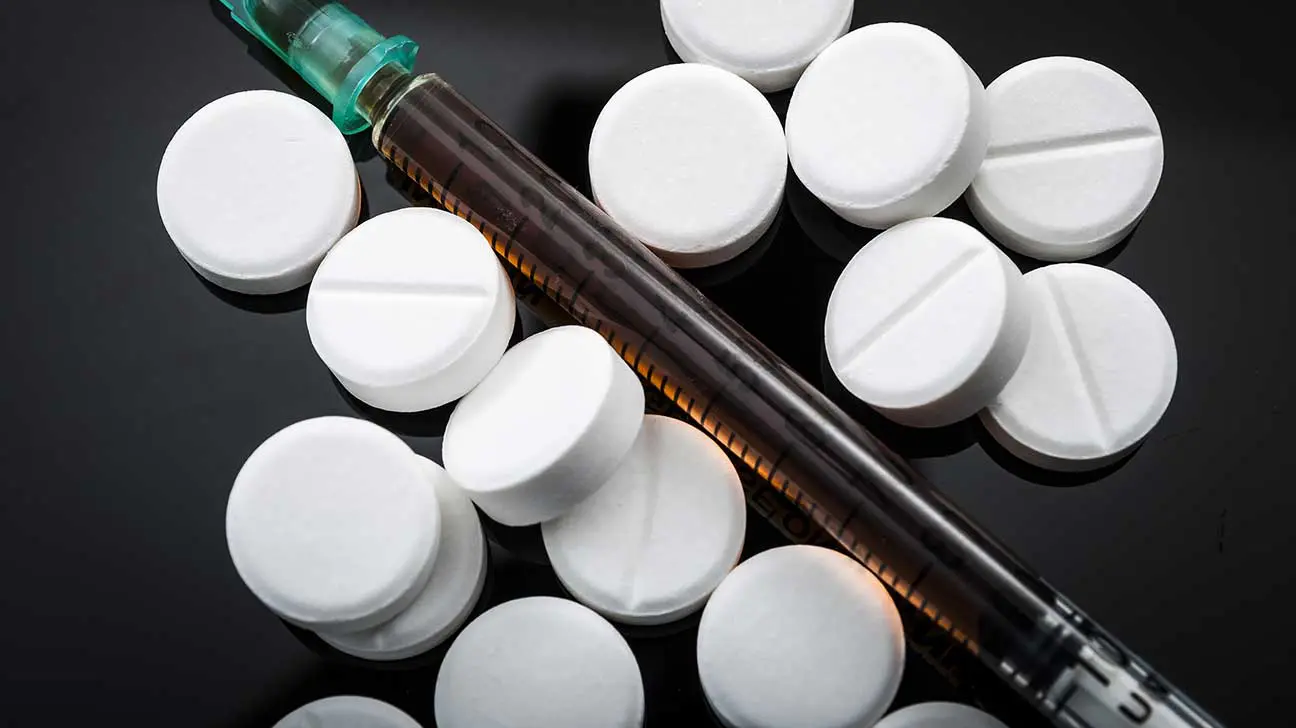
Opioid addiction, or opioid use disorder, is a physical and psychological reliance on opioid drugs that can negatively affect physical health, mental health, and general way of life.
Opioid addiction is a complex, but treatable condition. With medication, behavioral therapy, and drug rehab, achieving recovery from opioid addiction is possible.
Learn more about commonly abused drugs
What Are Opioids?
Opioids, also known as opiates, are a class of pain-relieving drugs. This includes prescription opioids like morphine and illicit opioids such as heroin.
Why Do People Use Opioids?
Opioid drugs have strong pain-relieving properties and can also be highly addictive. They can produce a powerful rush of euphoria, or extreme happiness and relaxation.
Types Of Opioids
Opioids drugs are classified according to specific characteristics, such as where they come from, their legal status, and how they can be acquired.
Types of opioid drugs include:
- natural opioids
- synthetic opioids
- endogenous opioids (natural opioids)
- prescription opioids
- illicit opioids
- over-the-counter opioids
- long-acting opioids
- short-acting opioids
Learn more about the different types of opioids.
List Of Opioids Strongest To Weakest
While opioid drugs work similarly, they are not all the same. The strength of their effects, or potency, varies by opioid type.
View our list of opioids from strongest to weakest.
What Is The Strongest Opiate?
According to the U.S. Centers for Disease Control and Prevention, the most potent opioid drug detected in the United States is carfentanil, an illicit fentanyl analog.
Read more about the strongest opiate
How Opioid Drugs Are Classified
Opioid drugs are classified according to various characteristics:
- legal status
- addictive potential
- abuse potential
- chemical makeup
Opioids That Are Commonly Abused
More than 10 million Americans reported misusing opioid drugs in 2019. While some opioids are more widely abused, others are less commonly abused for their effects.
Commonly abused opioids include:
- heroin
- fentanyl
- morphine
- oxycodone (OxyContin, Percocet)
- hydrocodone (Norco, Vicodin)
- oxymorphone (Opana)
- Opium
- hydromorphone (Dilaudid)
- codeine
- meperidine (Demerol)
- carfentanil
- tramadol (Ultram)
- buprenorphine (Suboxone)
- methadone
What Opioids Do: The Effects Of Opioids
Opioids work in the body by slowing down activity in the central nervous system.
When taken, opioids bind to the body’s opioid receptors, which can affect a person’s perception of pain, mood, cognitive faculties, and physical movement.
Opioid drugs can produce a rush of happiness, relaxation, and relieve pain. They can have a wide range of physical, mental, and psychological side effects.
Learn more about:
- General Side Effects Of Opioids
- Short-Term Side Effects Of Opioids
- Long-Term Side Effects Of Opioids
- Mental Effects Of Opioids
- Emotional Effects Of Opioids
Potency Of Opioids
The potency of opioid drugs varies. Opioid drug potency is typically described in terms of how it compares to natural opiates like morphine and codeine.
Opioid Drug Abuse: Ways To Use Opioids
Opioid drugs can come in a number of different forms, depending on the type of opioid, including: tablets, pills, lozenges, liquid, films, and patches.
Ways to use opioids include:
- swallowing
- injecting
- crushing and snorting
- smoking
- plugging
Read more about Opioid Methods Of Administration
How Long Do Opioids Stay In Your System?
The amount of time opioids stay in the system varies according to the type of opioid and other factors.
Several opioid drugs leave the bloodstream fairly quickly, within six to 24 hours. Long-acting opioids like methadone, however, may remain in the blood longer.
How Long Do Opioids Stay In Your Urine?
Urine tests are the most common form of drug testing. A urine test can detect opioids for 2-4 days after last use.
How Long Can Opioids Be Detected In blood?
Blood tests offer the smallest detection window for opioid drugs. Typically, opioids remain in the blood for only 24 hours.
How Long Do Opioids Stay In Your Hair?
Hair drug testing offers the largest detection window for opioids drugs. Opioids can be detected in hair for up to 90 days.
It does, however, take a few days for opioids to show in the hair, so a hair test may not be useful if a person has just started abusing opioids.
Signs Of Opioid Drug Abuse
Opioid misuse is defined as any use of opioids that are not prescribed by a doctor. Opioid abuse is a pattern of repeated opioid misuse.
Signs of opioid abuse can be behavioral, physical, mental, and psychological.
Opioid Drug Addiction Self-Assessment
If you or someone you know is concerned about their opioid use, there are several questions a person can ask themselves to determine whether their opioid use is a problem.
Dangers Of Opioid Abuse
Opioid abuse can be dangerous.
Over time, the dangers of opioid abuse can include the following:
- Opioid Addiction And Dependence: a physical and psychological reliance on opioids—also known as opioid use disorder.
- Opioid Tolerance: develops when the body becomes used to the amount of a drug taken. This requires that a person take more of a drug to achieve the desired effect.
- Opioid Withdrawal: can develop when someone who is dependent on opioids tries to stop taking them, or goes anywhere from six to 24 hours without a dose.
- Opioid Overdose: occurs when someone has taken too much of one or more drugs at once. Opioid overdose can be fatal without swift opioid overdose treatment through overdose reversal drugs, such as Narcan or Evzio.
Mixing Opioids With Other Drugs
Mixing opioids with other drugs, including alcohol and prescription drugs, can be dangerous.
Although opioids are sometimes prescribed in conjunction with other drugs, the combined use of opioids with other drugs—particularly other depressants—can carry serious health risks.
Opioid Interactions With Depressants
Depressants are drugs that slow down activity in the central nervous system. Combining depressants and opioids can enhance drug effects and increase the risk of serious, potentially fatal effects.
Opioid Interactions With Stimulants
Opioids are sometimes mixed with stimulants to counteract some of their effects, or to come down off the high of a stimulant like cocaine or meth.
Read more about mixing stimulants with opioids
What Is A Lethal Dose For Opioids?
One of the primary dangers of opioids is their high risk for overdose when misused. The lethal dose for opioids, however, varies by opioid type.
Read more about the lethal doses of different opioids
Opioid Use Disorder And Co-Occurring Disorders
Opioid use disorder, like other types of drug addictions, can sometimes co-occur with other mental health disorders, as well as chronic pain conditions.
Co-occurring disorders can include:
- opioid use disorder and depression
- opioid use disorder and anxiety disorders
- opioid use disorder and post-traumatic stress disorder (PTSD)
- opioid use disorder and personality disorders
- opioid use disorder and eating disorders
- opioid use disorder and bipolar disorder
- opioid use disorder and schizophrenia
- opioid use disorder and attention deficit hyperactivity disorder (ADHD)
Opioid Use Disorder And Overdose Death Rates
In 2019, over 80 percent of the total 70,630 drug overdose deaths in the United States involved an opioid. The majority of these involved illicitly manufactured fentanyl (IMFs).
The Opioid Epidemic In The United States
In 2017, the U.S. Department of Health and Human Services officially declared a public health emergency, in response to the steep rise in opioid overdose deaths occurring each year.
Since 1999, nearly 500,000 people have died due to drug overdose involving an opioid.
Read more about how overprescribing opioids has contributed to the opioid epidemic
Cost Of Opioids On The Streets
Opioid drugs can cost anywhere from $5 for heroin to $150 for hydromorphone (Dilaudid).
The cost of opioids on the street varies according to:
- type of opioid
- formulation
- purity
- geographic location
- supply and demand
- amount purchased
Read more about the cost of different opioids on the street
Street Names For Opioids
Some opioid drugs are referred to by street names, or nicknames.
Street names for opioids can vary according to the form the drug comes in, the type of opioid, and other factors such as geographic location.
Read about the street names for various opioids
Treatment For Opioid Addiction And Dependence
Opioid use disorder is treatable. Once addicted to opioids, imagining a future without opioids can seem hopeless and unachievable.
With treatment, achieving recovery from opioid addiction and dependence is possible.
There are several types of treatment programs that can help a person conquer an opioid addiction:
- Opioid detoxification: these programs can provide medication to help a person through the acute opioid withdrawal process. Detox programs are offered on an inpatient or outpatient basis.
- The Tapering Method: Tapering off opioids involves a gradual process of slowly reducing the amount of an opioid you’ve been taking.
- Medication-Assisted Treatment (MAT) Programs: MAT combines medications and therapy to reduce opioid cravings, reduce the risk of fatal overdose, and help a person return to a normal life.
- Medications for Opioid Withdrawal: typically part of an MAT program, these include buprenorphine (Suboxone), naltrexone (Vivitrol), and methadone.
- Behavioral Therapies: therapeutic interventions that address emotional, physical, and psychological effects of addiction and help support a whole-person recovery.
- Inpatient Drug Rehab Programs: the highest level of care for opioid addiction. This involves living in a rehab facility temporarily for 24-hour medical and behavioral care.
- Outpatient Programs: more flexible and less intensive than inpatient treatment. This involves attending treatment at a rehab center during the day and returning home after.
- Group Therapy: offers support, validation, and inspiration for people seeking to overcome drug addiction.
- Dual Diagnosis Treatment: a specialty program for people with two or more mental health and substance use disorders. This is the most effective approach for treating co-occurring disorders.
Opioid Addiction Recovery
Opioid addiction recovery is a journey, not a race. Living with addiction, or watching someone you love struggle, can be scary, frustrating, and feel hopeless at times.
Asking for help is the first step on the road to recovery. Seeking information about opioid addiction recovery, and available treatment options is normal and expected.
Opioid FAQs
Having questions about opioids, opioid addiction, and opioid addiction treatment is common.
You can find answers to some of the most frequently asked questions about opioids below.
Why Are Opioids Addictive?
Opioids are addictive in part because they alter a person’s baseline pain threshold and create desirable dopamine feedback.
How Do Opioids Work?
Opioids, sometimes called narcotics, are medications that attach to opioid receptors on nerve cells in the brain, spinal cord, and other parts of the body.
These medications block pain signals throughout the central nervous system and are used to relieve pain.
Learn more about How Opioids Work
What Do Opioids Do?
Opioids bind to proteins in the brain’s chemical receptors. Even after a short period of time, opioids can chemically alter the health and function of the brain.
Which Opioid Is 100 Times As Potent As Morphine?
The prescription opioid fentanyl is between 50-100 times more potent than morphine. Fentanyl is one of the most potent opioids that is commonly abused.
Because of fentanyl’s potency, people who take this drug are at an increased risk of deadly overdose and may experience severe side effects and withdrawals.
What Are Opioids Used For?
Opioids are most commonly used as medications to manage chronic pain or pain after a surgery or dental procedure. Sometimes, opioids are used to treat chronic coughs or diarrhea.
Are Opioids Depressants?
While opioids work to depress the central nervous system (CNS), opioids are not classified as depressants.
Call Today To Find Opioid Abuse And Addiction Treatment
If you or a loved one is struggling with opioid abuse or addiction, we’re here to help.
Call our helpline today to find an opioid addiction treatment center near you.
Addiction Resource aims to provide only the most current, accurate information in regards to addiction and addiction treatment, which means we only reference the most credible sources available.
These include peer-reviewed journals, government entities and academic institutions, and leaders in addiction healthcare and advocacy. Learn more about how we safeguard our content by viewing our editorial policy.
- American Society of Addiction Medicine — Opioid Addiction: 2016 Facts & Figures
https://www.asam.org/docs/default-source/advocacy/opioid-addiction-disease-facts-figures.pdf - Centers for Disease Control and Prevention — Opioid Overdose: Understanding the Epidemic
https://www.cdc.gov/drugoverdose/epidemic/index.html - National Institute on Drug Abuse — Effective Treatments for Opioid Addiction, Misuse of Prescription Drugs: Opioids
https://www.drugabuse.gov/publications/effective-treatments-opioid-addiction/effective-treatments-opioid-addiction - NPR—Trump Administration Declares Opioid Crisis A Public Health Emergency
https://www.npr.org/2017/10/26/560083795/president-trump-may-declare-opioid-epidemic-national-emergency - U.S. Department of Health and Human Services—Opioids: The Prescription Drug & Heroin Overdose Epidemic
https://www.hhs.gov/opioids/index.html - U.S. Food and Drug Administration—Opioid Medications
https://www.fda.gov/Drugs/DrugSafety/InformationbyDrugClass/ucm337066.htm


